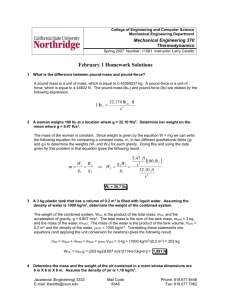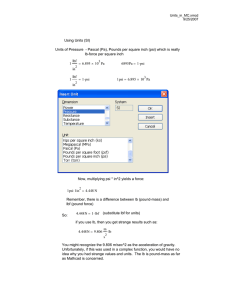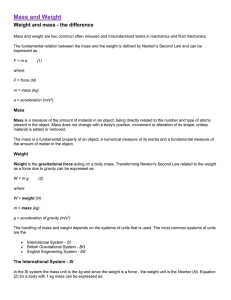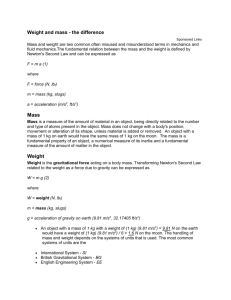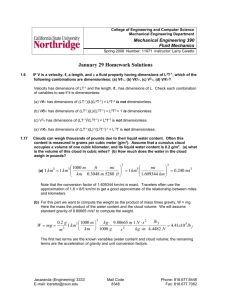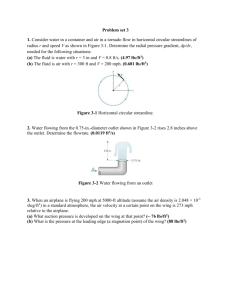Solutions
advertisement
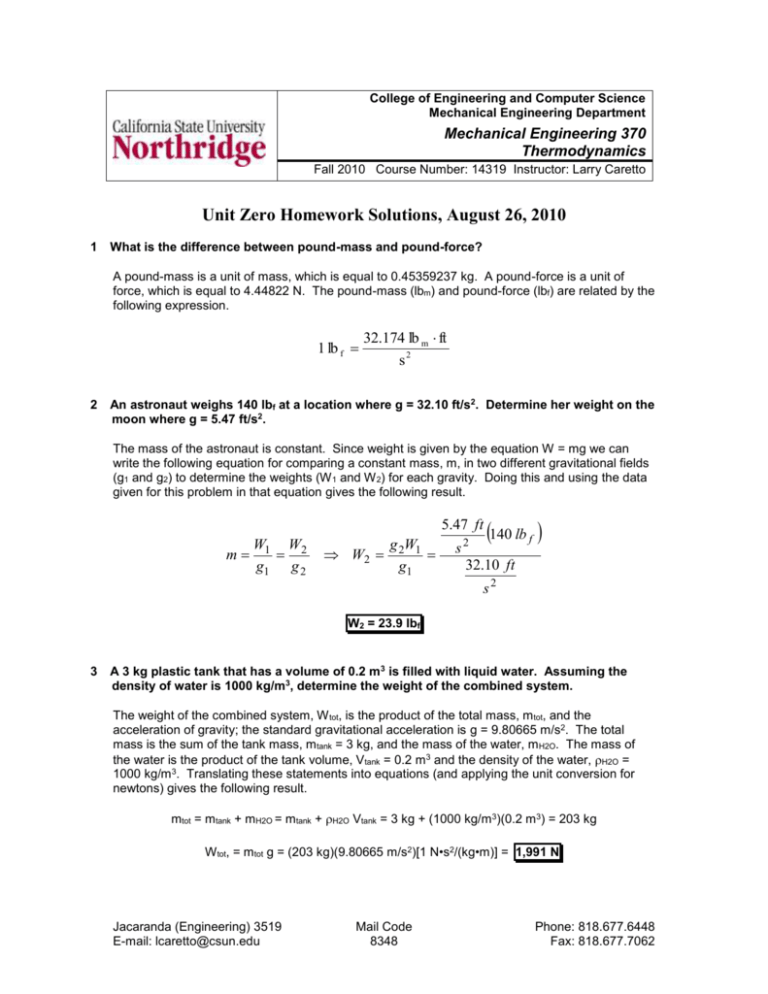
College of Engineering and Computer Science Mechanical Engineering Department Mechanical Engineering 370 Thermodynamics Fall 2010 Course Number: 14319 Instructor: Larry Caretto Unit Zero Homework Solutions, August 26, 2010 1 What is the difference between pound-mass and pound-force? A pound-mass is a unit of mass, which is equal to 0.45359237 kg. A pound-force is a unit of force, which is equal to 4.44822 N. The pound-mass (lbm) and pound-force (lbf) are related by the following expression. 1 lb f 2 32.174 lb m ft s2 An astronaut weighs 140 lbf at a location where g = 32.10 ft/s2. Determine her weight on the moon where g = 5.47 ft/s2. The mass of the astronaut is constant. Since weight is given by the equation W = mg we can write the following equation for comparing a constant mass, m, in two different gravitational fields (g1 and g2) to determine the weights (W 1 and W 2) for each gravity. Doing this and using the data given for this problem in that equation gives the following result. 5.47 ft W W m 1 2 g1 g 2 g W W2 2 1 g1 140 lb f s2 32.10 ft s2 W2 = 23.9 lbf 3 A 3 kg plastic tank that has a volume of 0.2 m3 is filled with liquid water. Assuming the density of water is 1000 kg/m3, determine the weight of the combined system. The weight of the combined system, W tot, is the product of the total mass, m tot, and the acceleration of gravity; the standard gravitational acceleration is g = 9.80665 m/s2. The total mass is the sum of the tank mass, m tank = 3 kg, and the mass of the water, m H2O. The mass of the water is the product of the tank volume, Vtank = 0.2 m3 and the density of the water, H2O = 1000 kg/m3. Translating these statements into equations (and applying the unit conversion for newtons) gives the following result. mtot = mtank + mH2O = mtank + H2O Vtank = 3 kg + (1000 kg/m3)(0.2 m3) = 203 kg W tot, = mtot g = (203 kg)(9.80665 m/s2)[1 N•s2/(kg•m)] = 1,991 N Jacaranda (Engineering) 3519 E-mail: lcaretto@csun.edu Mail Code 8348 Phone: 818.677.6448 Fax: 818.677.7062 Unit zero homework solutions 4 ME 370, L. S. Caretto, Fall 2010 Page 2 Determine the mass and the weight of the air contained in a room whose dimensions are 6 m X 6 m X 8 m. Assume the density of air is 1.16 kg/m3. The weight of the air, W air, is the product of the air mass, m air, and the acceleration of gravity; in the absence of any other data we can use the standard gravitational acceleration, g = 9.80665 m/s2. The mass of the air is the product of the room volume, Vroom = (6 m)(6 m)(8 m) = 288 m3 and the density of the air, air = 1.16 kg/m3. Translating these statements into equations (and applying the unit conversion for newtons) gives the following result. mair = air Vroom = (1.16 kg/m3)(288 m3) = 334 kg W air, = mair g = (334.08 kg)(9.80665 m/s2)[1 N•s2/(kg•m)] = 3.28x103 N
